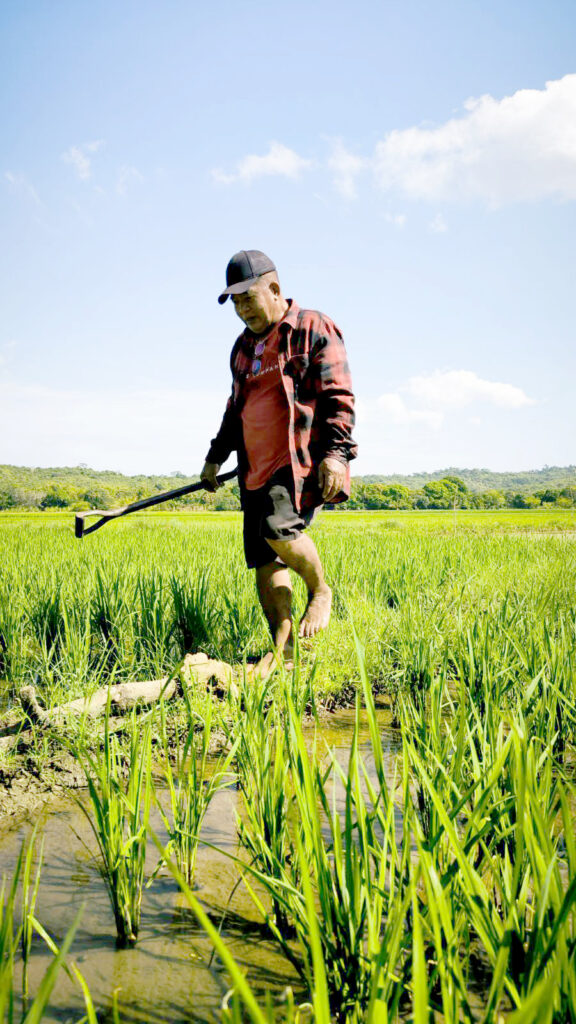It’s early morning and Mang Boy, as Barangay Nagbalayong Councilor Tirso Bautista is called, walks around his ricefield in Morong, Bataan. He checks the irrigation canal and removes any debris blocking the flow of water to the paddy.

“This continuous flow of water is coming from the mountains,” Bautista says, while pointing to the direction of the Bataan National Park (BNP) in the distance.
The BNP straddles the northern half of Bataan Peninsula, near the border with Subic Bay Freeport Zone. The 23-hectare watershed drains into the Morong, Almacen, Talisay, Bagac, Kabayo, Sutuin and Bayandati rivers.
According to the Department of Environment and Natural Resources, rainforests are actually enormous water reservoirs. The trees absorb water from the soil and accumulate it in a process called interception. Much of this water evaporates and ends up as precipitation elsewhere on the planet via clouds and wind.
The rivers relay water to farms in the municipalities of Hermosa, Orani, Samal, Abucay, Balanga, Bagac and Morong. The National Irrigation Administration’s floodgate in the mountain controls the flow of water uphill while the farmers build and maintain irrigation canals, downhill in their farms.
For Mang Boy, who grows RC 160 variety of palay, irrigation water flows to the Morong River’s tributary, the Tape River. He harvests twice to thrice a year.
“This is a big help to us farmers especially that we are experiencing El Niño in the country. We are lucky to have the Bataan Park supply water to us,” he says.
Free flowing
When asked what is the biggest problem of the irrigation canals, Bautista says it’s the blockages. He says there is a need to regularly inspect the irrigation canals in the area to ensure that there is no obstruction.
“There are times that we need to clear the waterways to ensure that water continuously flow to our farmlands. With El Niño upon us, even a day without water might spell disaster to some of our farmlands,” he warns.
Mang Boy says that with the BNP as the source of water for the farmlands, the farmers of the town of Morong can “weather” the drought affecting flat areas of Central Luzon.
“BNP has been a Godsend to us farmers, ensuring that we will always have a bountiful harvest. We are blessed with the waters from the mountains, and I hope that the BNP would remain a protected area and continue to provide water for the next generation of farmers,” he says.
The park was first established in 1945 under Proclamation No. 24 with an initial area of 31,000 hectares and included portions of the fenced area of SBFZ. In 1987, the park was reduced to its present size of 23,688 hectares and is now wholly located in Bataan province.
The province boasts a thriving agricultural sector that yields a wide variety of crops, including corn, rice, root crops, mangoes, bananas, and various vegetables. Its more than a hundred rivers irrigate farms and serve as source of shrimps, native snails and different species of frogs.